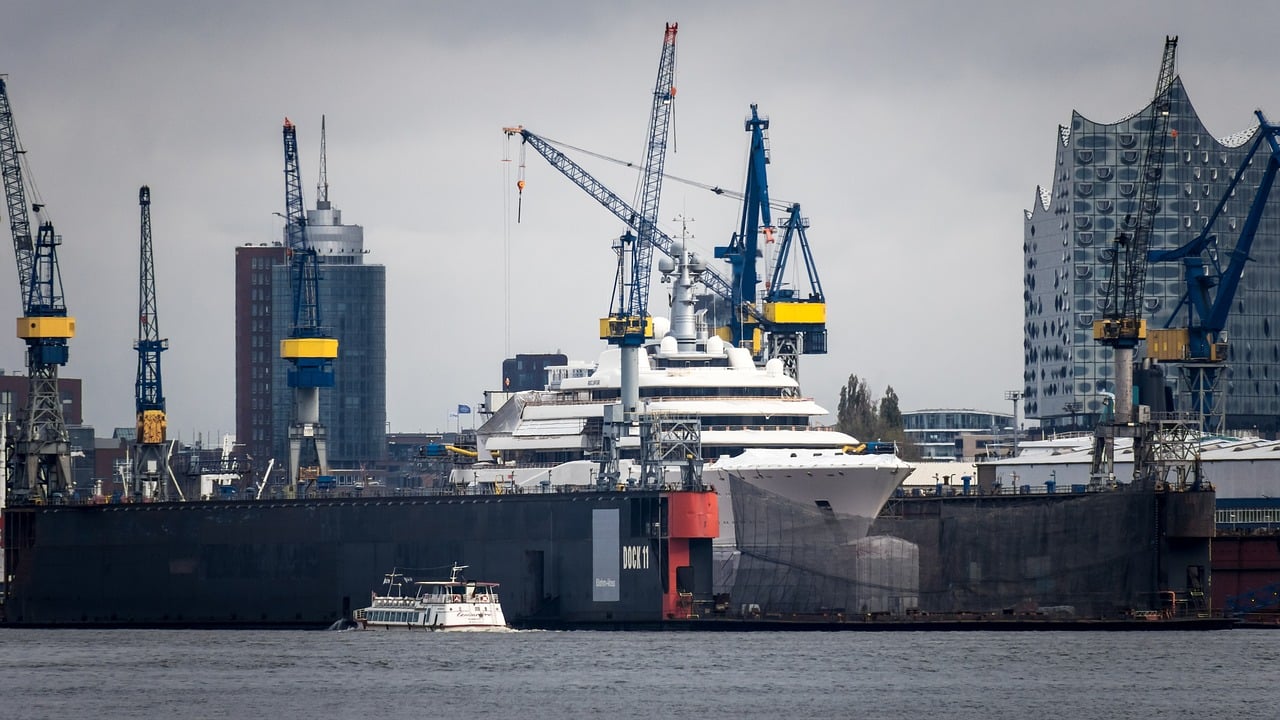About 90% of the world’s trade depends on maritime shipping. While shipping volumes around the world continue to rise, some ports have benefited more than others. The rise of China as a global manufacturing hub has led to the Chinese ports handling more volumes than ever before. Getting all those Made-in-China goods in the hands of consumers and businesses around the world is not an easy task. It’s no wonder then that most of the world’s top 10 busiest ports are in China.
These are the top 10 busiest ports on the planet
According to an estimate, about two-thirds of the world’s container traffic passes through ports in China or ports in other countries built with Chinese investment. These are the world’s top 10 busiest ports based on the volume of trade in millions of twenty-foot equivalent units (TEUs). This ranking is based on the most recent data from the World Shipping Council.
10- Tianjin, China
Currently operated by Tianjin Port Group, this port was first used in the first century BC. However, its development began only in the 17th century AD under the reign of the Tang Dynasty. The port of Tianjin is the maritime gateway to Beijing. It is connected to China’s capital city through multiple waterways. Tianjin handled 14.49 million twenty-foot equivalent units (TEUs) in 2016, up from 12.3 million TEUs in 2012.
9- Jebel Ali, UAE
The Jebel Ali port in Dubai, UAE is one of the busiest ports on the planet. It was also ranked the ‘Best Seaport in the Middle East.” It began operations in 1979 to reduce the load on Port Rashid. Jebel Ali port handled 15.73 million TEUs of cargo in 2016, a decent growth from 13.30 million TEUs in 2012. It is operated by DP World UAE Region. Jebel Ali happens to be the most used harbor by the US Navy outside the United States.
8- Qingdao, China
Qingdao port handled a volume of 18.01 million TEUs in 2016, according to the World Shipping Council. It has been operating since 1892. The port has 81 functional berths, of which 51 are dedicated to a single type of cargo. The remaining 30 berths handle other types of cargo. Qingdao port offers direct shipping routes to more than 150 countries.
7- Guangzhou Harbor, China
For centuries, Guangzhou was the only Chinese port accessible to most foreign traders. But it lost its monopoly to Shanghai, Hong Kong and other ports when the British gained control over it during the First Opium War. The Guangzhou Harbor handled a volume of 18.85 million TEUs in 2016, up from 14.74 million TEUs in 2012. It is currently operated by the state-owned Guangzhou Port Group.
6- Hong Kong SAR, China
Hong Kong sits in the midst of one of the busiest trade routes in the world. The port of Hong Kong handled a volume of 19.81 million TEUs in 2016, down from 23.12 million TEUs in 2012. Its volume has been decreasing in recent years due to fierce competition from the mainland Chinese ports. The Hong Kong port connects with more than 470 locations around the world. It has nine container terminals.
5- Busan, South Korea
Busan is the largest port in South Korea and it has been operating since 1876. It handled 19.85 million TEUs in 2016, up from 17.04 million TEUs in 2012. Yong Island splits the port, which is connected to the mainland by drawbridge. The west side of the port focuses on fishing while the east side handles trade activities.
4- Ningbo-Zhoushan, China
The ports of Ningbo and Zhoushan were merged in 2015 to form the third largest port in China. It connects to more than 600 ports in over 100 countries. The Ningbo port has been operating since 738 AD. Ningbo-Zhoushan handled 21.60 million TEUs in 2016, a dramatic increase from 16.83 million TEUs in 2012. The port has been increasing its efficiency to meet the rising demand.
3- Shenzhen, China
Shenzhen is a collection of ports along the 260km long Guangdong province coastline. It serves as an export hub for electronics manufacturers and other businesses around the Pearl River Delta. Shenzhen handled 23.97 million TEUs in 2016, up slightly from 22.94 million TEUs in 2012. Shenzhen hosts more than three dozen shipping companies.
2- Singapore
Just like Hong Kong, Singapore has seen its volumes decline in recent years due to competition from Chinese ports. But it remains one of the top 10 busiest ports in the world. Singapore handled 30.90 million TEUs in 2016, down from 31.65 million TEUs in 2012. It is connected to more than 600 ports around the world. Singapore is also one of the largest refrigerated container ports on the planet.
1- Shanghai, China
Shanghai holds the crown of the world’s busiest port. It handled 37.13 million TEUs in 2016, up from 32.53 million TEUs in 2012. The port of Shanghai currently has the size of 470 football pitches. It’s growing its area and improving its efficiency to handle the future demand. Shanghai alone accounts for more than a quarter of China’s foreign trade in terms of value. It has seen a 71% increase in volume over the last decade.
China is by far the most dominant force in maritime shipping. The country is investing heavily in ports, roads, and railways as part of its One Belt One Road initiative, which should further strengthen its dominance in shipping and international transportation.





